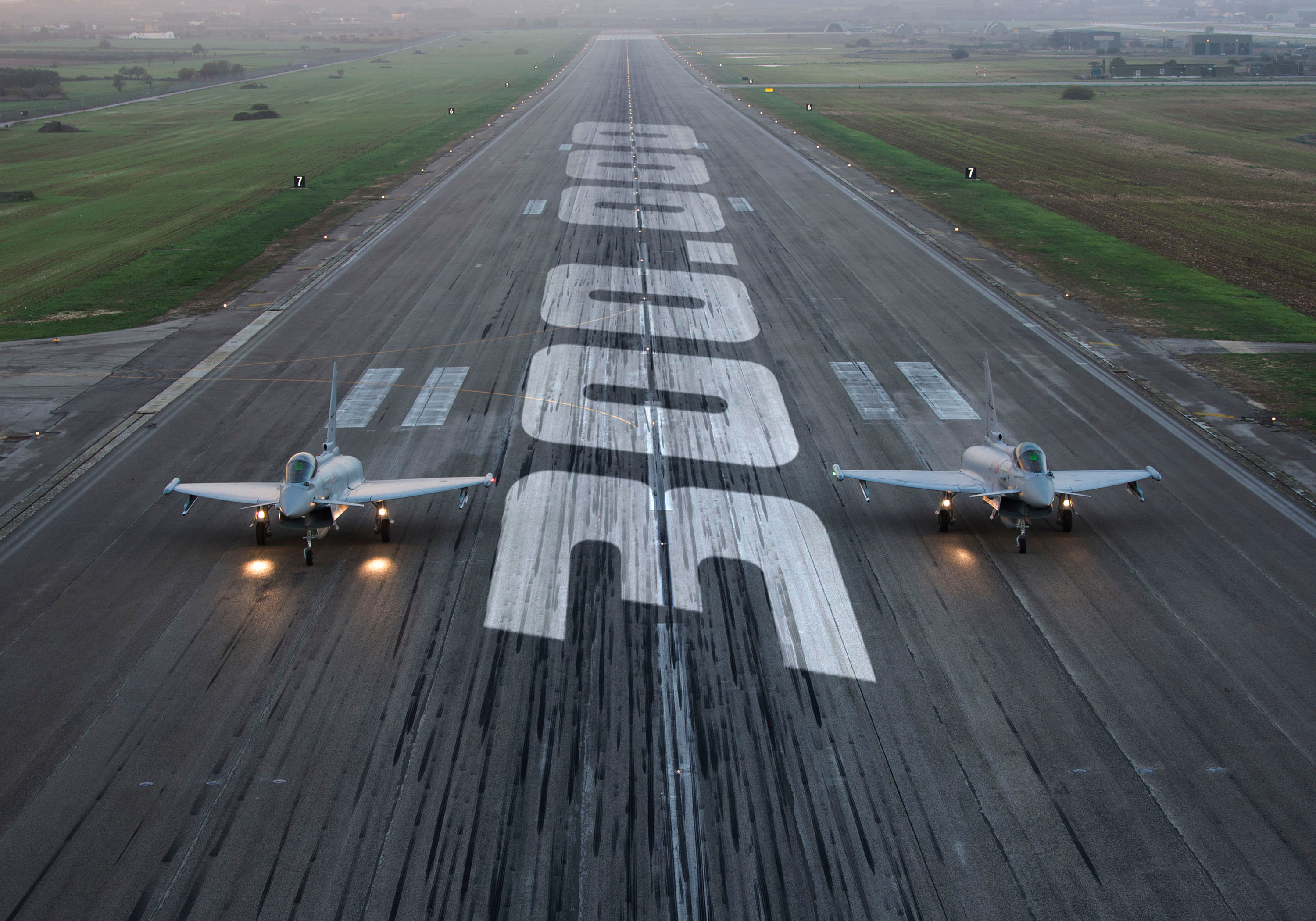
Breaking News: Dassault Aviation today (April 30, 2015) announced that Qatar is to acquire 24 Rafales. The deal is to be signed on May 4.
SHAH ALAM: The Royal United Services Institute for Defence and Security Studies has come out with a report titled “Maximising European Combat Air Power Unlocking the Eurofighter’s Full Potential”.
The report is written by Justin Bronk, a research analyst specialising in air power and technology in the Military Sciences team at RUSI. He holds an MSc in the History of International Relations from the London School of Economics and Political Science, and a BA (Hons) in History from York University.
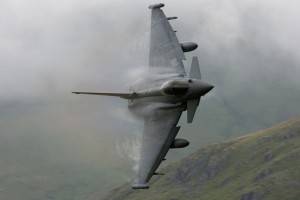
Due to copyright issues I will be only putting some paragraphs from the report which I found relevant and interesting. You can read the full report here.
“As with the F-15, the drawbacks of this approach are high procurement and operating costs compared to lighter designs such as the F-16 and Saab Gripen. If total programme cost is divided by the number of aircraft procured then the RAF’s Typhoons cost somewhere in the region of £110 million each at current prices. Although expensive, partner nations receive an air-superiority fighter capable of outmatching all currently operational fighter aircraft in the world with the exception of the stealthy and even more expensive US F-22 Raptor.”
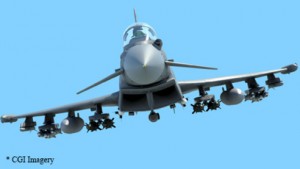
“In the early years of the Eurofighter programme, software bugs would often complicate start-up
procedures and aircraft availability. However, especially during the last five years, these issues have largely been solved and the jet has earned a reputation amongst pilots and maintenance crews for excellent reliability ‘on the ground’, helping deliver greater serviceability and operational output per
airframe and pilot.”
“However, at squadron level– especially in German and Italian service – problems remain and should be
fixed as a priority. Currently, pilots are forced to spend mental capacity coping with minor errors and trying to work around them. This limits their ability to use some of the more advanced capabilities of the platform. Furthermore, certain relatively minor deficiencies can seriously constrain the capability of
the system as a whole to function as intended.
“Live training exercises with Indian Air Force Su-30MKI fighters in 2007 and 2011 were an unusual opportunity to test the Eurofighter’s WVR combat capabilities against the most advanced ‘Flanker’ then in service. The RAF Typhoons involved in the exercises were able to reliably beat the Su-30MKIs by countering the latter’s advantage in horizontal turning and high-alpha2 manoeuvres through superior acceleration and vertical manoeuvres, coupled with helmet-cued missile targeting.
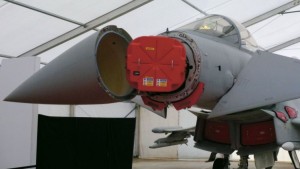
“Against LO designs such as the T-50, J-20 and export-focused FC-31, the Eurofighter will struggle in the air-superiority role without CAPTOR-E, since CAPTOR-M cannot reliably detect and target such designs.
Some sources have suggested the CAPTOR-E will be capable of detecting LO designs such as the F-35 out to around 60 km and PIRATE IRST has great potential for detecting stealth designs which are, by nature, large
and hot with a correspondingly strong infrared (IR) signature. Progressive enhancements to PIRATE and the accuracy of passive location and electronic warfare capabilities through the DASS, coupled with the radar CAPTOR-E being developed for the RAF, together offer a boost to situational awareness and detection capabilities, which should make RAF Typhoons formidable opponents against even LO designs from the early 2020s.
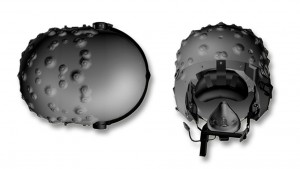
“If investment is sustained in the mid to long term, the significant systems growth potential on top of the formidable basic airframe/engine combination, as well as upgrades to weapons systems, radar, PIRATE and the DASS, mean that the Eurofighter is capable of remaining a valuable and potent multirole asset for air forces well beyond 2030″.
A side note.
The report is mostly based on interviews conducted on site with front line Typhoon pilots from the UK, Germany and Italy. If only we can conduct such interviews with our front line personnel!
— Malaysian Defence
If you like this post, buy me an espresso. Paypal Payment

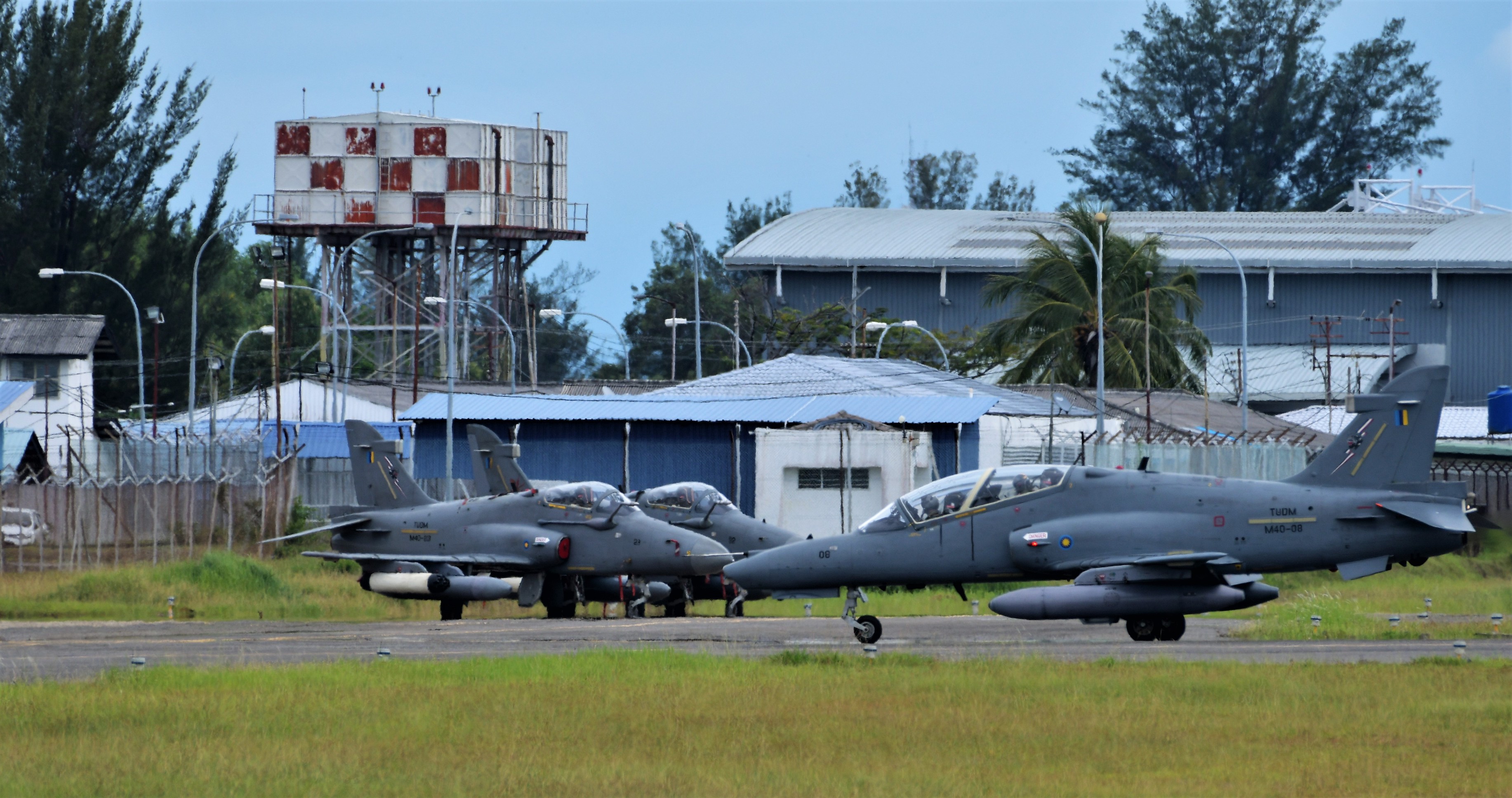
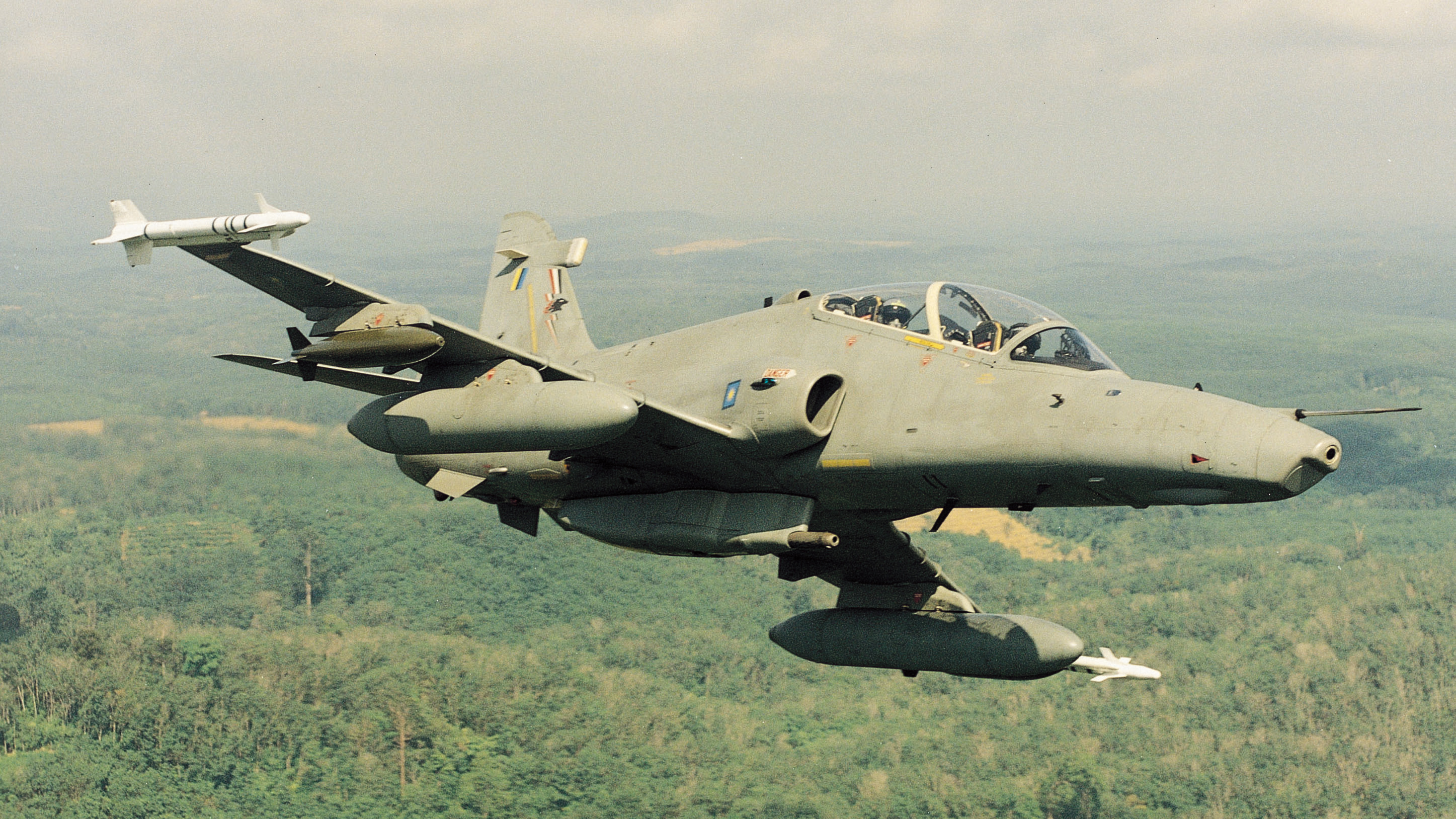

Cheam1972 says:
May 5, 2015 at 9:42 am
Thanks Azlan
Azlan says:
May 4, 2015 at 11:34 pm
Cheam1972,
Only Charlies and CN-235s.
Cheam1972 says:
May 4, 2015 at 5:12 pm
Could anyone clarify whether our Hawk can operate from the runaway at Terumbu Layang-Layang?
Azlan says:
May 4, 2015 at 3:15 pm
Me – ”I did not expect that you would wrestle a couple of advertising buzz word.”
And I did not expect that you would fail to grasp the point I was making. Marketing literature tells us a lot; quite often what is not mentioned is more important than what’s mentioned. We have to read between the lines and separate the key facts from what you would call ”buzz words”. The fact that Thales’s marketing literature on Damocles places much more emphasis on the pod’s virtues as a targeting, as opposed to a navigation pod; says a lot.
Me – ”You really should dig in why the pod is made to how it is.”
And you should really do your own ”digging” to find out if Damocles is really a navigation pod. BTW, I have asked people with working experience on the pod and others who have indirect knowledge on it. My ”digging” up was not based on web searches or trolling through various sites.
Me – ”Any a/c design conceived after the 80s will have some kinda provision for multirole and as part of the PLM it is destined to become one, but does not change the fact that it is focused to one side.”
Fair enough but irrespective of initials plans and the history behind the programme; the plain fact remains that Typhoon has emerged as a ”multi-role” aircraft, is marketed as such and will totally replace the RAF’s F-3s and GR-4s.
.
CFC says:
May 4, 2015 at 1:54 am
With all the impending acquisition of the new MRCA I wonder does the RMAF feel satisfied with our own Su-30’s?
Me says:
May 3, 2015 at 1:23 pm
AM ,
By “is one such system with a radar of its own”, you mean two separate pod that each weight 200kg verses all other all in one solution.Yes you are right in this regard.
AM says:
May 3, 2015 at 11:40 am
“Thank you for the explanation. But I never in my career seen an EO pod coupled with radar.”
Please do some research. The LANTIRN pod is one such system with a radar of its own. In other cases, the aircraft’s radar has a terrain following mode.
Me says:
May 2, 2015 at 10:48 pm
AM,
Thank you for the explanation. But I never in my career seen an EO pod coupled with radar.
Azlan,
I did not expect that you would wrestle a couple of advertising buzz word. The new pod is one of the two upgrade paths that were planned ahead for the mid life upgrade. And the new pod still does not spot a HD resolution. You really should dig in why the pod is made to how it is.
Any a/c design conceived after the 80s will have some kinda provision for multirole and as part of the PLM it is destined to become one, but does not change the fact that it is focused to one side.The Italian got a big piece from JSF, and the Germans braced for another cut. Unless the Kingdoms from the east is funding the program, the rest of the consortium will only do it for the sack of commitment.
Azlan says:
May 2, 2015 at 6:37 pm
Lee – ”The RAF suffeted more losses as compared to the USAF n tactics were changed.”
They deployed the same tactics they would have had the balloon gone up and the RAF had to attack airfields in East Germany and Poland. Given that the Soviets had a layered defence which was designed to engage targets as far as 50km away, right down to over the airfields with MANPADs; we can safely speculate on the kind of losses the RAF would have suffered.
Lee – ”So the tactic to use depends on many criterias.”
Indeed it does. Quite often the target can be hit by high altitude but to get there without being detected, strike packages will come in low and exploit terrain or blind spots; which is what the Israelis did during recent strikes on Syria. Also, we have become accustomed to hearing of strikes launched from mid to high altitude from manned an unmanned platforms in places such as Iraq, Afghanistan, Lebanon, Yemen and Libya but these were all places where the ”bad guys” had no functioning AD network. And we have yet to reach the stage where technology can totally overcome any obstacles caused by bad weather.
AM – ”The Damocles pod does not have a terrain following radar.”
I would like to think that we bought Damocles because Thales was systems integrator for the programme and buying a different pod might have led to other problems. Damocles was the best the French had during that period and funny enough, was integrated on the MKM years before it would be on Rafale.
Lee Yoke Meng says:
May 1, 2015 at 11:06 pm
Well the low n mwdium altutude profiles were flown by the RAF during the first Iraq war while the USAF used high altitude precision bombing. The RAF suffeted more losses as compared to the USAF n tactics were changed. Moral of the story is if the terrain is flat like Iraq n the airspace is highly contested, then the way to go is high altitude so can avoid many AA n manpad missiles. However due to thw runway bomb carriwd by the british bombers must be deluvered only at low level they have no choice. But now this is academic as the weapon has been ban by the UN n the stock of bomb delivery mrans destroyed by the RAF
So the tactic to use depends on many criterias.
AM says:
May 1, 2015 at 10:13 pm
…
”repeating endlessly about low level terrain masking? That tactic is almost never used in this days of stand-off weapons and precision glide bombs.””
That’s because all the current conflicts these days are asymmetric. There are no air forces involved on the other side. Terrain masking is an essential tactic against peer states.
“Damocles is a multirole pod.”
In case you are implying that Damocles can do terrain following, let me explain it to you. The Damocles pod does not have a terrain following radar. Multirole in the sense it provides FLIR imagery and lasing. Terrain following is not one of these roles.
I also found the following about the N011 radar:
-“provides a low altitude terrain avoidance mode, and automatic terrain following capability.”
-“reported as offering both air-to-air and air-to-surface (ground mapping and terrain-following/terrain-avoidance) operating modes.”
Azlan says:
May 1, 2015 at 9:16 pm
If Damocles was indeed a multi-role pod why is Thales rushing to get a replacement for the French air force and why does marketing literature put forth by Thales put more emphasis on Damocles’s ability as a targeting pod?
It’s official Thales designation is a “multifunction targeting pod” as opposed to Litening which is a “targeting and navigation” pod. No doubt the imagery provided enables it to be used for low level navigation but not to the extent as Litening and other pods; as such it’s utilised more as a targeting pod. There have been public complaints in the past on Damocles’s ineffectiveness as a navigation pod and in a French service was an interim solution. It is for the same reason that a number of air arms evaluated Damocles but eventually settled on Litening.
Irrespective of the industry tussles behind the Typhoon and it’s history; the fact remains that it is at present a multi-role type and has been marketed as such. Even when the prototype flew as the EAP it was intended to ultimately be a multi-role replacement for the F-3s and GR1s.
reply
From the report it is clear that the Italian Air Force may well follow RAF lead and make its Typhoons multi role as well. The big question is whether the Germans will follow as well as noted by the report as it has not ordered the F35 while it’s Tornado fleet will also need replacing after 2020
Azlan says:
May 1, 2015 at 7:13 pm
…..,
Kindly explain to me why the RAF still practices low level terrain masking flights and why other Tier 1 air arms still do the same. Contrary to what you claim or would want to believe; stand off munitions have not totally done away with the need to come in fast and low. Also explain to me why certain types of sorties (including strikes done in this century – which qualifies as the new millennium – and not in the 1980’s) are still performed at low level and why current generation AESAs have the needed mode?
As for my comments on the IAF and what apparently doesn’t make sense to you; at the cost of me “endlessly repeating” myself (yet) again, the only airframe in the IAF capable of doing low level, terrain masking flights after the Floggers retire, will be the Jaguar which like the Flogger but unlike the MKM, was designed for the role.
The MKI was designed for the air to air role, deep strike interdiction, anti maritime and CAS but not the low level penetrating role that requires terrain masking flights. The inability of the MK to do the same is exactly why the Russians are upgrading their Su-24s and are replacing the type with Su-35s, which the Russians have openly stated, has been modified for the role (needed structural modifications were also performed when creating the F-15E). The only fighter radars we have that have a terrain avoidance/ masking mode are the ones on the Hawks and Hornets (downgraded on some export variants). Funny enough, a Bars catalogue I read some time ago, takes 2 pages to list all the radar’s specs and performance but there is not a single sentence on it having a terrain avoidance mode. I’ve also confirmed this with an ex-RMAF guy who said that we do many things with our MKMs but NOT low level strikes which are done by the Hawks (only in certain weather conditions and altitudes). If you ask the right people the right questions, you tend to get the right answers….
You are right – my mistake – about the IAF having the Litening, which unlike Damocles is a targeting/navigation pod which is essential for all weather, low level flying.
Me says:
May 1, 2015 at 2:45 pm
AM,
Better detection of target is a general advantage from PSA. A non-AESA, PESA radar for example, does the job just fine. The look down feature not only involve physically pointing the beam downwards but also the signal processing. In this regard, there is nothing an AESA can do that a PESA can’t, if of course both were design to do the task.
The E-3 your sifu said to be the eye of the non-AESA Typhoon for example spots a non-AESA radar.
Azlan,
Typhoon end up an interceptor in the 90s due strategic reshuffle in the 90s. And now only the BAE side of the consortium has the momentum to multirole the a/c.
Damocles is a multirole pod.
Azlan says:
May 1, 2015 at 2:00 pm
Shed,
The Typhoon was designed during the Cold War but from the start it was intended to be multi-role and was progressively upgraded. Did I previously indicate otherwise? The difference – when compared to others – is that Typhoon from Day One was intended to be multi-role for an RAF and partner nations that did not have multi-role aircraft.
And what do jammers have to do with anything? Jammers have been around for decades and the ones carried by fighters are intended to deal with the seeker heads of AAMs; they do not have enough power to deal with ground based surveillance or acquisition radars, irrespective of whether an aircraft was coming in at 300 or 30,000 feet. As for stealth, stealth hasn’t done away with the need for aircraft to use terrain for masking. Stealth as you know reduces the RCS and to an extent reduces detection time but we haven’t reached a stage where stealth makes one entirely disappear.
I readily agree that the vast majority of sorties with stand off precision guided munitions are conducted at medium to high altitude and there is less of a need to come in low compared to previous decades. What I don’t agree with is the tendency to assume that stand off munitions has entirely done away with the need for low level flights: due to the type of target, it’s placement, nature of threat, weather and other factors that can and do play a part. If indeed, terrain masking low level flights have gone out of vogue or have become unnecessary; kindly explain why Tier 1 air arms still practice for the role and why a number of successful and highly publicised raids (in recent times) have been conducted at low level by air arms that have no shortage of smart munitions and jammers?
Me saying that the MKM/MKM can’t conduct low level flights because the Bars does not have a terrain avoidance/ masking mode and because the airframe can’t take the stress tolerance levels; does not indicate I have anything against Russian made equipment. Whether made in St.Louis or Tula; all equipment have their pros and cons, which you as a keen military observer will be highly aware off. Also, if Dr. M has only negative stuff to say about American gear, then why on earth did he authorise orders for so much American gear during his time as PM?
… says:
May 1, 2015 at 1:20 pm
Qatar getting 24 rafales? Wow. Waiting for kuwaiti choice next…
… says:
May 1, 2015 at 1:19 pm
@ azlan
Your points are all from the 80’s none from the new millennium.
Alot of things you said about the mki is not accurate.
The bars radar contray to what you said does have terrain following and obstacle avoidance mode.
The mki also does have a navigation/targeting pod. It uses the israeli litening pod.
Your point that they need the rafale because the mki can’t do terrain following flights doesn’t make sense.
shed says:
May 1, 2015 at 10:12 am
Azlan
Sorry but i have to disagee with u.. the typhoon was design during the cold war. Firstly as a fighter. Other capabilites came in later. Theres a lot of articles regarding the issue. If i was not mistaken certains ‘quirks’ remains unresolved until today.
Yes terrain masking is important in achieving the element of supprise especialy so when u dont have any stealth fighter laying around. But the brother does have a point. Who uses the technic nowadays? In an era of jammers and smartbombs. Next to none i think. But as always i could be wrong.
Dont get me wrong here bro, but u seem to have a strong dislike towards russian made tech the same way the ‘old man’ does 4 american made stuff..
Azlan says:
April 30, 2015 at 11:39 pm
P.S.
…… – ”That tactic is almost never used in this days of stand-off weapons and precision glide bombs.”
You overlook the fact that low level terrain masking is not only for the release of ordnance but also to minimise detection times. We know from open source material and eye witness reports that when the IDF hit targets in Syria not too long ago [F-15s], they came in very low; as they did when they hit Osirak in 1981 [F-16s] and the PLO HQ in Tunisia in 1985: the IASF has no shortage of stand-off weapons and precision glide bombs but when there is a need to come in very low, they still do. I’ve made mention of the Israeli examples not to repeat myself endlessly but to place emphasis on the point I’m trying to make.
Michael says:
April 30, 2015 at 11:23 pm
More news for Rafale
http://www.janes.com/article/50810/indian-rafale-deal-to-be-finalised-by-end-of-may
http://www.janes.com/article/51086/qatar-selects-rafale-fighter-aircraft
Azlan says:
April 30, 2015 at 11:04 pm
……. – ”repeating endlessly about low level terrain masking? That tactic is almost never used in this days of stand-off weapons and precision glide bombs.”
Thats where you’re mistaken. The reason I’m ”repeating endlessly” is to point out that the MKM/MKM is not truly multi-role as we would like to believe. Do some research and find out for yourself whether the days of terrain masking flying are really over. ”Stand-off weapons and precision glide bombs” come with limitations. There will be intances where weather and the type and placing off targets will entail the need to come in low; not only to minimise detection times but also for other reasons. And if the days of terrain masking flying are really over as you claim then why do all AESA radars in production for Western types have a low flying terrain masking mode and why do current gen navigation/targeting pods have a low flying image resolution mode ? Why does the RAF still practice low level terrain masking sorties in Scotland and why do USAF F-16s do the same in the deserts of New exico and Nevada?
…. – ”If it needed so, it is more capable of handling it structurally. Look at the strike eagles. That too is based on an interceptor.”
Indeed it is. But who’s to say that the F-15E doesn’t have an airframe that can tolerate lower flying compared to the F-15C or A?
….. – ”So in no way the mki’s are directly related to the rafale purchase by the iaf as the mkibis considered a different class of fighter to the rafale”
I never said the MKM and Rafale are in the same class category but I did and still maintain that the Rafale purchase is related to the Rafale deal but don’t take my word for it; do some asking in Indian military and other related blogs/forums. What I did say is that with the retirement of the MiG-27s, the only fighter capable of low level terrain masking flights will be the Jaguar; and that despite the DARIN upgrade, the Jaguar will be retired in less than a decade. The Bars radar does not have a terrain masking capability and the IAF does not have a navigation/targeting pod. For that matter, neither do we: Damocles is a targeting pod as opposed to Litening and others which are navigation/targeting pods; essential for all wheather low level flying.
… says:
April 30, 2015 at 6:16 pm
@azlan
repeating endlessly about low level terrain masking? That tactic is almost never used in this days of stand-off weapons and precision glide bombs.
If it needed so, it is more capable of handling it structurally. Look at the strike eagles. That too is based on an interceptor.
The Indians are buying the rafale to fulfil its MMRCA programme. Note there are 2 M’s there. The 1st M is for medium.
Heavy fighers in iaf is fulfilled now by the mki, and will be replaced later by the fighter they will derive from the Pak-fa
Medium fighters are those mirage 2000 and mig-29s.
Light fighters mig-21, to be replaced by the tejas
So in no way the mki’s are directly related to the rafale purchase by the iaf as the mkibis considered a different class of fighter to the rafale
Azlan says:
April 30, 2015 at 2:32 pm
Michael – ”MKI/MKM categories as MRCA, Typhoon also categories as MRCA but MKI/MKM designed to be good for airstrike/bomber, while Tyhoon is designed to be have a good dog fight.”
No. The Typhoon from the onset was intended to be a MRCA. The Su-30 is an superiority fighter that can also perform interdiction and anti-maritime but is not as multi-role as the Typhoon, Gripen or the Rafale. If the MKI was really multi-role and could perform the low level, terrain masking role, there would be less need for the Rafale.
Michael – ”the result will improve if fit with latest AESA or Irbis-E.”
It will improve when we get a AEW and fit all our fighters with a common data link.
Michael – ”however we will kill by AIM-120C/D first before we can fire our R-77.”
Luckily we are unlikely to ever find ourselves operating against Uncle Sam. If we did, the inability of our fighters to know they were fired upon, until the AMRAAM seekers go terminal, may be the least of our problems. Our power and telecommunications power grid will be paralysed by a cyber attack, our radars and GPS jammed and our bases hit by Tomahawks.
AM says:
April 30, 2015 at 1:29 pm
Azlan has said pretty much all there is to say about radar detection tactics. He has nicely summarized the
current writings of aviation tacticians.
Additionally it is known that non-AESA radars have a problem detecting even small sized non-LO aircraft. As AESA reliably resolves this problem, it stresses the handicap of not having AESA if you are fighting advanced peers.
The article said that LO designs are “by nature, large and hot with strong IR signature.” I would like to know why this is so.
Michael says:
April 30, 2015 at 11:47 am
70km range is a pretty impressive result to detect a stealth fighter jet, however we will kill by AIM-120C/D first before we can fire our R-77.
the result will improve if fit with latest AESA or Irbis-E.
MKI/MKM categories as MRCA, Tyhoon also categories as MRCA but MKI/MKM designed to be good for airstrike/bomber, while Tyhoon is designed to be have a good dog fight.
nothing can be apple and apple compare example Samsung note vs Xiao Mi Note. besides having very different price but how about reliability and also software functions? at the end of day, still very depending our affordability and also our possible treat…
MILSPEC says:
April 30, 2015 at 11:24 am
So, the new radar will able to detect enemy much more better literally?
Azlan says:
April 30, 2015 at 11:10 am
The mention of difficulties in dealing with LO designs in the air superiority role without CAPTOR E is interesting. In any air campaign however, the Typhoon will never be operating on its own but will have input from RAF or USAF E-3s, as well as other ISR assets, which can also detect targets passively, through their data links, comms or IFFs. It will also depend on whether one is facing a peer adversary or one that is generations behind in capabilities. If facing a peer adversary, we can only speculate on how CAPTOR E and other radars will fare against spoofing and active jamming.
On the results of simulated WVR engagements against IAF MKMs, it will be interesting to speculate on lessons learnt by IAF crews, especially given that the MKMs also have a HMS and an off bore sight capable missile. If anything, rapid advances in technology point to the fact that in modern air warfare the bulk of engagements will be at a BVR level (we saw this during Kosovo and the Gulf war). Assuming there’s a merge, it will I suppose, boil down to individual pilot skills and who has superior SA and luck. No matter how super manoeuvrable an aircraft is, it can’t evade or out fly an AAM.
On the operating costs in comparison to the F-15; hardly surprising as newer gen designs have a much higher level of electronics/computers on board compared to older designs like the F-15C or E. What is interesting to discover is how the Typhoon’s operating costs compares to Rafale.
At LIMA Boeing had a point when it mentioned the Super Hornet being more “mature” compared to its competitors which rely on stuff that is still immature and not fully developed.
clubM,
It is often not realised that the F-22 and F-35 are never meant to operate on their own. They are always meant to operate in conjunction (networked) with other assets and will always have superior SA over potential opponents. Irrespective if the range an opposing fighter can detect an F-22 or F-22; it will be very unlikely that the opposing fighter using its on-board radar will be able to detect an F-22 or F-35 without first being detected. The detection range of the radar will also depend on various factors; in a real life engagement there will be jamming and spoofing.
clubM says:
April 30, 2015 at 10:10 am
If not mistaken mkm can detect stealth raptor within 75km already…
Reply
But do we know at what range the Raptor detects the MKM?
fird says:
April 30, 2015 at 9:49 am
Well Marhalim, you are the man..’you are the chosen one’..
Reply
I may get a yes or no answer in regard to the MRCA but nothing on operational issues as covered by the Typhoon report.